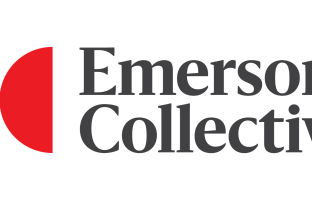In the wake of George Floyd’s murder and the resurgent Black Lives Matter movement that followed, institutions across the country, including Harvard Business School (HBS), examined themselves with a critical eye.
In the subsequent soul-searching conversations at HBS, one of the School’s shortcomings came up repeatedly: HBS faculty write—and thus students experience—too few case studies with protagonists who are underrepresented minorities.
“It’s important to note that our MBA students have long shared with us their concerns about the lack of representation among the case protagonists they study every day in class,” said Jan Hammond, senior associate dean for culture and community. The MBA Student Association took action in June 2020, creating the “Juneteenth Case Pledge” in honor of the date that the final enslaved people were emancipated from the Confederacy. The pledge asked faculty members to commit to writing a case with a Black protagonist by Juneteenth (June 19) 2021, or 2022 at latest. Every faculty unit also created a plan to develop more inclusive and diverse teaching materials.
“Our students are right that protagonist diversity matters. By studying cases with a wide diversity of protagonists, students learn that talent and leadership come from all background and identities,” noted Jan Rivkin, senior associate dean and chair of the MBA Program. “If students don’t understand that, they’ll worsen inequities, miss out on opportunities for themselves, and miss chances to create opportunities for others.”
The drive for protagonist diversity became a focus for the Dean's Anti-Racism Task Force, convened in June 2020 and comprising faculty, staff, students, and alumni. Its seven workstreams included one on the curriculum, led by Professor Robin Greenwood and Carin Knoop, executive director of the HBS Case Research and Writing Group (CRG), which explored the specific challenge of creating organizational processes and infrastructure to sustainably increase the representation of diverse protagonists, including Black protagonists, in the classroom. The CRG played a central role in the steps that followed, including by reaching out to the HBS African-American Alumni Association, current students, and faculty to identify promising case leads.
As a result of this effort—involving HBS faculty, staff, students, and alumni—faculty have completed more than 70 cases with Black or African American protagonists. Another 50 more such cases are still in process. They also completed more than 90 cases (plus 20 still in process) featuring protagonists who are LatinX/Hispanic, Asian or Asian American/Pacific Islander, or Native American or other Indigenous people. Considering that HBS faculty produce on average about 400 cases each year, 160 completed cases represent a significant percentage of the overall number. In addition, new faculty casework focuses on race, inequality, and diversity and inclusion in America and beyond.
“We knew our faculty wanted to help, but I never suspected we’d be able to write so many relevant cases so quickly,” said Hammond. “This has been a difficult year for everyone, and it is simply breathtaking to see the commitment and hard work the HBS faculty, with stellar support from the CRG and the Division of Research & Faculty Development (DRFD), have invested in this critical objective for the School. This is an extraordinary accomplishment, and shows the deep commitment our faculty have towards supporting our students and the HBS Racial Equity Plan.”
In addition to increasing the number of cases, the faculty need to place those cases into courses. In 2020-2021, the number of cases taught in the first year Required Curriculum (RC) with Black or African American protagonists increased by nearly 60 percent, giving students more exposure to leaders of varying backgrounds.
The creation of more cases led to an important question: How do we categorize and portray the protagonists in each case so that faculty members can quickly identify them in our database, hopefully leading to more usage? The CRG developed new systems and processes to collect identity information directly from case protagonists and to track the various characteristics of each case.
“The new categorization process is not only important for internal teaching purposes, but as educational institutions worldwide look to HBS and Harvard Business Publishing to source business cases, being able to have them be easily recognizable should help with adoption and dissemination,” said Senior Lecturer Tony Mayo, a member of the curriculum workstream.
“The work of the past year, including not only the creation of more cases but also the use and categorization of those cases, demonstrates the power of a collective goal in a committed community like ours,” Hammond reflected. “We still have a long way to go to have cases that reflect the full, rich diversity of human talent, but we now have more confidence in how far we can move, and how fast, when we work together.”
This article originally appeared in HBS Newsroom.







